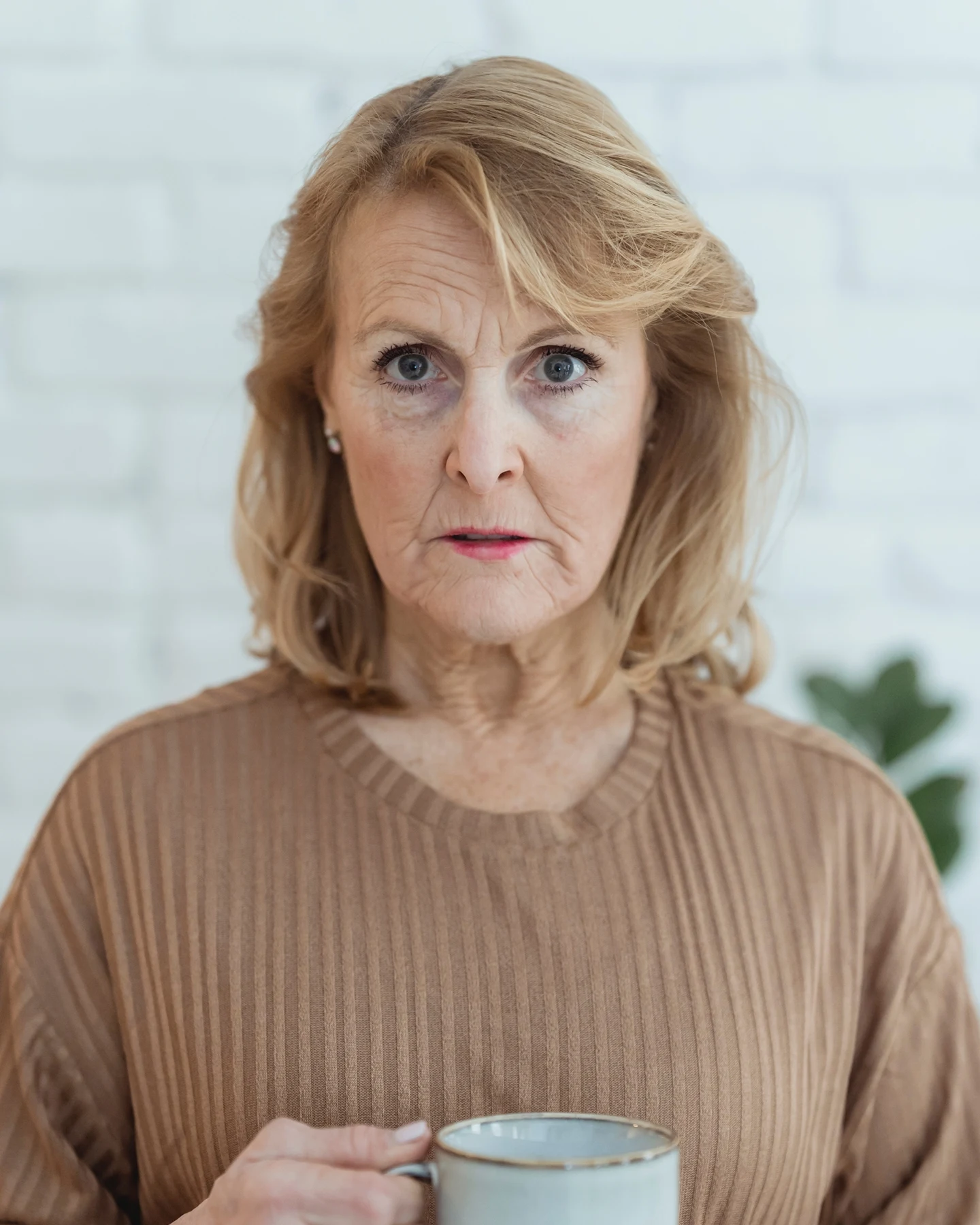


 |
| Unsplash photo |
Hair @miledmansour
Makeup @darinechbaro
Book an appointment
Whatsapp: 0096171481113
📧: maisongeyanna@gmail.com
 |
| Pexel photo |
EXPOSURE TO TRAFFIC NOISE LINKED TO HIGHER DEMENTIA RISK
23 Gele styles trending on Instagram in 2022

Keep an eye on your symptoms and maintain a healthy lifestyle.

Pexel photo

What else do we know about managing diverticular disease today? Here are some dos and don'ts to keep in mind.
Don't be concerned about diverticulosis.
Do inform your physician about any bleeding.


Consume a variety of healthful foods that are high in anti-inflammatory properties.
Here are some foods that aid in the fight against inflammation.
Ask the doctor
Q. I’ve been taking blood pressure pills for 20 years, but I just turned 75. Do I still benefit from taking them?
A. There is no doubt about the benefit of treating high blood pressure in people younger than 75. But some doctors have wondered if, in people older than 75, the benefits might be less and the chance of bad reactions to medicines might be greater. So, you’re asking a question that we doctors have asked ourselves.
A study published online on Aug. 26, 2021, by The Lancet is the best one I’ve seen on this question. It indicates that the value of blood pressure treatment continues in people over 75 years old. Scientists pooled the results of 51 randomized clinical trials involving 358,707 people, who ranged in age from 21 to 105 years old. Nearly 59,000 people were ages 75 or older. With so many people in the analysis, the results are more likely to be valid.
Randomized trials are the best type of study for judging the benefits and the risks of treatment. Such trials randomly assign some people to take a real blood pressure pill and others to take a placebo (inactive pill). Since the people in the two groups are very similar except for the kind of pill they are taking, any differences in their subsequent health are likely to be explained by whether they took the real medicine or the placebo. So, because of the large number of people in the analysis, and the fact they were all in randomized trials, we can trust the results of the analysis.
Q. I manage my high blood pressure with hydrochlorothiazide (a diuretic) and long-acting metoprolol (a beta-blocker). I feel fine, but my heart rate doesn’t go up like it used to before I started taking the metoprolol. Does that mean I am not getting as much health benefit whenever I exercise?
A. All beta-blockers slow down your heart rate. The slower rate happens at rest and also when you exercise. To get the most from aerobic exercise, you would normally want your heart rate in a moderate-intensity zone for at least 30 minutes most days of the week. Moderate intensity means exercising at a heart rate that is 60% to 75% of your maximum.
An easy formula to find your maximum heart rate is 220 minus your age. So, if you are 60, your maximum heart rate is 160. Therefore, moderate-intensity exercise measured by your pulse is 96 to 120 beats per minute. While this formula usually works well to help gauge the aerobic intensity of exercise, it doesn’t work for people who take a beta-blocker. And unfortunately, there is no simple way to adjust for the slower rate of the drug.
Instead, you can use your breathing to gauge your effort. With moderate-intensity exercise, you should be able to talk, but with pauses to catch your breath. If you are breathing very hard and unable to speak during exercise, you are at high intensity.
Can beta-blockers affect your ability to work out? Studies that have addressed your question have not provided a definitive answer. A competitive athlete’s performance likely could be diminished by taking a beta-blocker. However, for most of us who exercise to stay healthy, the evidence tilts toward no decrease in benefit, even though you may not hit the standard heart rate goals.
The difference between fruits
Consider purchasing organic.
Products with plant stanols are an alternative to butter, but the health claims might not stand up.
To keep your arteries clear, nutritionists frequently recommend limiting your daily intake of butter, which is high in saturated fat. Is it true that butter substitutes made from plant stanols are a superior option?
Plant stanols are generated from the membranes of plant cells. Nuts, beans, fruits, and vegetables are examples of foods that contain them naturally. Supplements containing these naturally occurring chemicals have been proven to lower "bad" LDL cholesterol by up to 14 percent in adults taking 2,000 to 3,000 milligrams (mg) per day in previous trials. However, butter-replacement products frequently lack sufficient plant stanols to achieve a therapeutic effect.
cholesterol improvement
Types of plant stanols
Every piece of jewellery ornament adds up to a memory to be cherished forever. So selecting the right jewellery for events like weddings, engagement ceremonies, business parties, or a hot night date is essential. In addition, jewellery is an accessory that states the personality of the person. From a delicate pair of studs earrings to the big chunky piece of statement rings, the gemstone jewellery has always added glamour to women’s appearance. Each of the gemstones and their meanings is very unique. For thousands of years, they have been revered for their power and beauty. In this blog, we will know about a few gemstones rings that sparkle to runaway the fashion with their gorgeous magnificence. Let us dive in.
Larimar
Another blue colour gemstone loved for its appearance is the Larimar. It is a gemstone that has white swirls on the surface. People admire wearing Larimar rings because of their healing energies, and it is one of the soothing stones which will bring calmness and peace into the wearer’s life. This stone is only found in one place in the whole world, that is, the Dominican Republic. It is composed of the pectolite mineral, which is abundant in the world, but the Larimar stone is rarest. In addition, it could be worn daily to make life happy and prosperous. In addition, pairing the agate ring, on the other hand, will add beauty to the existing look of the wearer.
Moonstone
Moonstone is believed to have the energies of goddess Diana as it they are the moonbeams that have fallen to earth. They have a beautiful sheen that attracts every eye and makes a place in the viewer’s heart. They are available in the shades of blue, pink, white, orange, yellow, multi-colour, and colourless. People often gift the moonstone ring to their spouse as this crystal has the energy to make their bond stronger with mutual understanding. In many countries, they are even used as engagement rings, as it enhances the love between the couple and makes their life better.
Turquoise
We know that women always adore the jewellery given to them by their mothers, as they have the love and glory from the past. But we have another exciting stone that is the Turquoise stone. It is one of the oldest stones mined and has wonderful energies of sky and ocean in it. The statement Turquoise ring looks fantastic when worn on the left hand’s third finger. This gemstone is usually bought for wearing on an everyday basis as it brings good fortune with health and wealth. It is a bluish-green stone with a matrix on the surface. Adding it to your collection would be an ideal choice.
Did you know that over two-thirds of the 6.2 million people in America who have Alzheimer's disease are women? This means that women are nearly twice as likely to have Alzheimer's disease as men. Alzheimer's disease is more common among women, but why is this so?
Alzheimer's disease is a progressive brain ailment that gradually impairs memory and thinking abilities, eventually impairing the capacity to do even the most basic tasks. In the majority of patients with the condition—those with late-onset symptoms—symptoms begin in their mid-60s.
Women live longer than men.
The primary reason is that women live longer than men. When actuarial life tables are consulted, it becomes clear that a baby girl born in 2019 is anticipated to live five years longer than a baby boy: 81 versus 76 years.
Age is the most important risk factor for Alzheimer's disease; the older you get, the more likely you are to get the condition. For instance, the incidence (the number of people diagnosed with Alzheimer's disease each year) varies according to age:
Each year, four out of every 1,000 people aged 65 to 74 get Alzheimer's disease.
Each year, 32 people aged 75 to 84 develop Alzheimer's disease.
Alzheimer's disease affects 76 out of 1,000 adults aged 85 and older each year.
Thus, one reason there are more women with Alzheimer's disease than men is that our society has 5.7 million older women than older men, and the older you are, the more susceptible you are to having Alzheimer's disease.
However, this is not the complete explanation.
Alzheimer's disease is more prevalent in women.
Women have a somewhat higher risk of having Alzheimer's disease later in life than men. One study monitored 16,926 people in Sweden and discovered that women were more likely to be diagnosed with Alzheimer's disease than men of the same age, beginning at age 80. Similarly, a Taiwanese study discovered that women had a larger likelihood of developing Alzheimer's disease over a seven-year period than men. Furthermore, a meta-analysis of the Alzheimer's disease incidence in Europe discovered that roughly 13 women out of 1,000 developed Alzheimer's disease per year, compared to only seven men.
Thus, women living longer than men cannot be the whole explanation for why women are more likely than men to develop Alzheimer's disease, as women are more likely to be diagnosed with the disease even among individuals of the same age.
Women do not have a higher incidence of non-Alzheimer’s dementia than men.
One hint to the solution to this issue is that women do not have a higher risk of having dementia from causes other than Alzheimer's disease. For instance, a study of dementia rates in Sweden discovered that women and men were equally likely to develop non-dementia Alzheimer's as they aged. The fact that Alzheimer's disease rates vary by gender but not for non-dementias shows that there must be a unique connection between Alzheimer's disease and gender.
Amyloid deposition in Alzheimer's disease may represent a defense mechanism against infections.
Another piece of the puzzle comes from Harvard researchers, who believe that amyloid, one of the pathological components of Alzheimer's disease, is deposited in the brain to combat infections. If this hypothesis is right, we may consider Alzheimer's disease to be a result of our brain's immune system.
Gülizar Nisa Uray, Engin Altan Düzyatan, and Belçim Bilgin feature in the Turkish film My Father's Violin (Turkish: Babamin Kemani), directed by Andaç Haznedaroglu and released in 2022. Netflix released the film on January 21, 2022.

COVID-19 rates are rising across the country and in many parts of the world, making it more critical than ever to protect ourselves and others. The greatest defence against COVID-19 is a multi-layered approach, beginning with vaccines and boosters for everyone who is eligible.





















